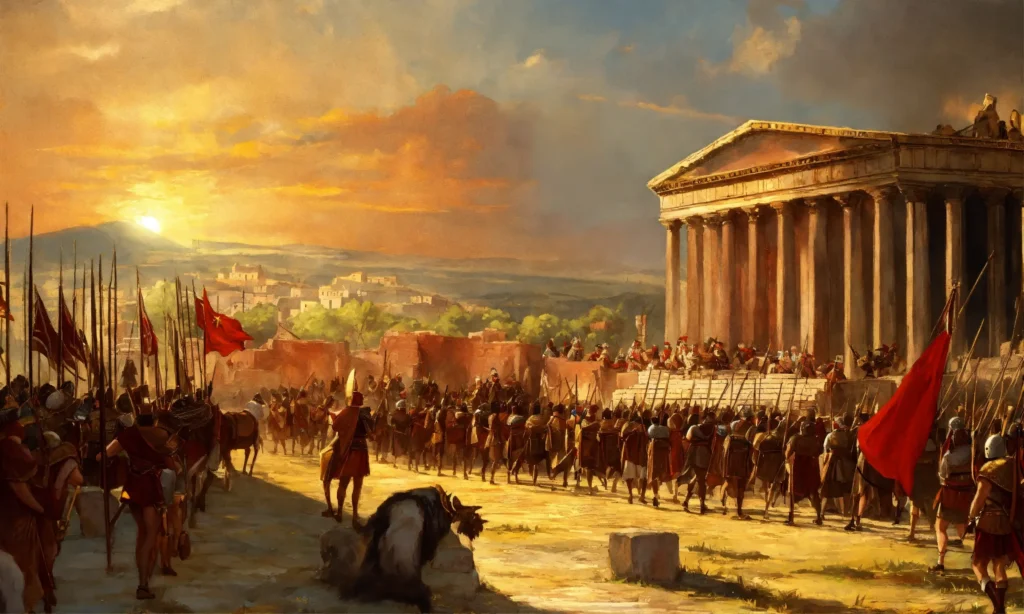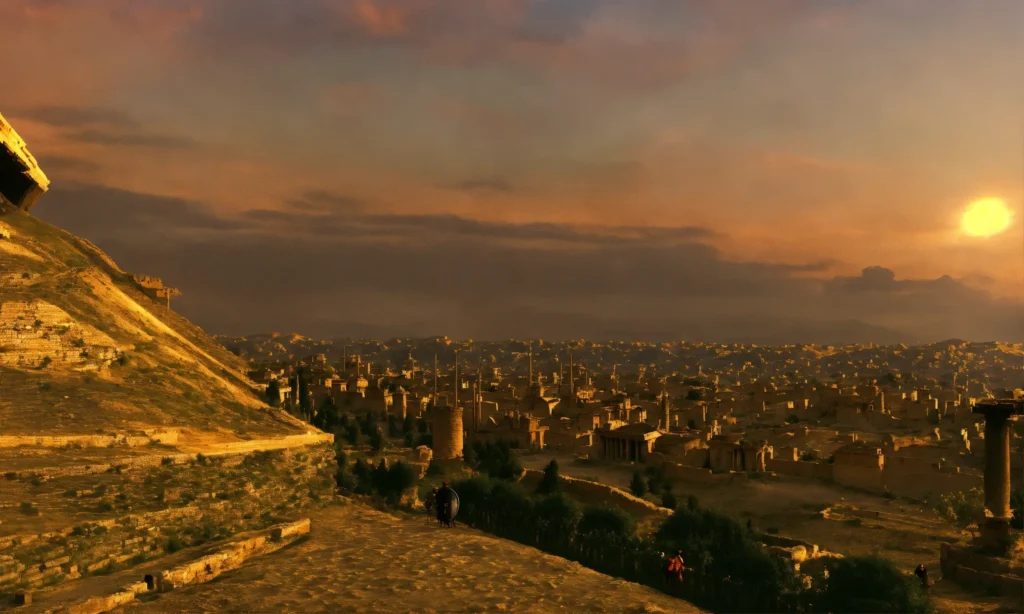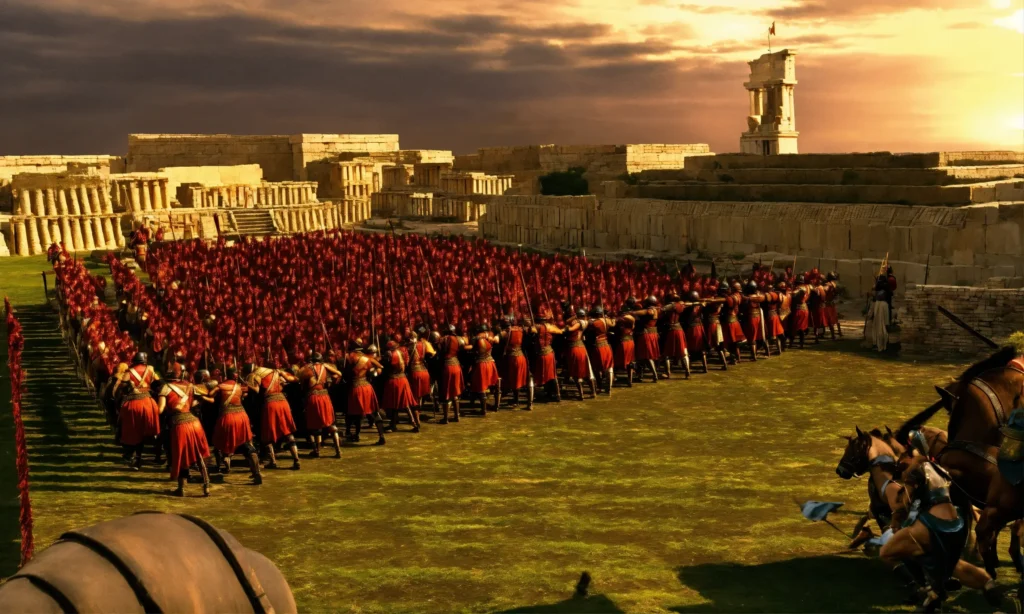The truth of Homer’s epic poem revealed by an amateur archaeologist
Because the evidence that increases the historical probability of the Trojan War comes out one by one when you forget it, the debate over its practicality does not die down. One of them was the discovery of a large number of diplomatic documents in Hattusa, the capital of the Hittites Empire. It says that in the 13th century B.C., a huge force called Ahhiyawa invaded their own country, Wilusa.
At the time, Hittites called the Achaeans Ahhiyawa. As it happens, Wilusa has a similar pronunciation to Homer’s Iliad. Homer’s Iliad means the story of Ilios or the song of Aliens. Ilio is another name for Troy.
The problem is that the location of this Wilusa matches the location of today’s excavation site, which is considered Troy. So from these diplomatic documents and the excavated sites, it’s very likely that the Mycenaeans invaded Wilusa and burned and plundered the city.
So why did this crash happen? You were in the Bronze Age and bronze, unlike iron, could not dig for the necessary minerals anywhere. You could have made a lot of money by shipping the tin you dug up in Europe to Anatolia or Mesopotamia. And the main trade was the Dardanelles Strait. This long strait into the Black Sea was so strong that it was difficult for ships to pass by technology at the time.
So the merchants take the land route with their boats and goods in this area. Troy was right there until the overland transportation. Troy became rich by receiving tolls from people passing through his territory.
There is a passage in Iliad where Achilleus tells Troy King Priam that your fortune overwhelms everyone. Of course, the Americans, who were sincere about trade, would have thought that Troy’s toll was unfair. And they were looking for a chance to invade Troy.
Of course, there are many hypotheses that the Trojan War was not such a grand cause, but rather a mere pirate of the mechanics. Homer’s Iliad is a song about the last demonstration of the Trojan War, which is still loved to this day.

The achievements of the amateur archaeologist’s tenacity
But for a long time, not many people thought it was just a condensed story of the brilliant imagination of a genius poet or the imagination of many people.
But in the meantime, there were people who thought that the story of the Iliad was not fiction. One of them was the 19th-century German and amateur archaeologist Johann Ludwig Heinrich Julius Schliemann, who admired the heroes of Homer‘s epic poem.
At the age of seven, when he saw the island of Troy in the picture book of Children’s World History, he thought that such a strong castle would never disappear and that the traces would be buried somewhere in the ground. And I’m determined to find this place someday.
But that dream was never easy. Because his family was poor, he had to drop out of school at the age of 14. But with good business skills, he becomes a millionaire at the age of 42 through banking and military service.
He never let go of Ilias while he was becoming a millionaire. And as soon as we raise the target funds, we will pull out of the project cleanly and start a full-fledged archaeological excavation.
Schliemann has been to several areas mentioned as candidates for Troy but has not made any significant progress. And then we met Frank Calvert, a British diplomat and amateur archaeologist in the other Argoris Bay in Turkey, who was as much a trojan as Herbert and as much a Schlyman. Frank Calvert went on a diplomatic mission to the northwestern Turkish city of Kanakale
This happened to be what Homer described as a campsite for the Greek army. Local residents and travelers have long thought that there was a Troy on one of the hills in the area.
So did Calvert. He bought a part of the hill, believing that there was a Troy on the hill of Hisarlik, 32 meters high, based on a topographic study. And as soon as we were about to do a full-scale excavation after many preparations, the Crimean War exploded and we had to postpone the excavation.
After the war, Calvert tried to reopen the excavation, but there was a lack of funds. So he’s recruiting sponsors. And then I joined another Troy nerd, millionaire Heinrich Julius Schliemann.
In 1871, the Ottoman Empire approved the excavation permit and the excavation began in earnest Heinrich Julius Schliemann was convinced that Troy would have ruins at the bottom of the hill as much as a saint long ago and hired 150 workers to dig the ground in an aggressive way.
And finally, in 1873, we found a seven-meter-long strong wall and traces of Troy Schliemann was convinced that this was the palace where Priam, king of Troy, lived. He thought he could find Troy Palace, and soon he could find Primorsky’s Golden Warehouse. In Homer’s epic, there was a secret warehouse deep inside the Troy Palace, and it was written that there were countless treasures.
And Heinrich Julius Schliemann was digging down the ground and eventually found the treasure. As many as 6,000 treasures were found, including metal jewelry, crowns, and copper shields.
The most famous one among them is the headdress made of pure gold. He thought this was Helene’s. And he covers his wife Sophia with Helen’s head decorations and treasures and then takes pictures, and she spreads this photo to the press and announces that she has found the treasure of Priam.
He ignored his colleagues and took all the credit alone. Heinrich Julius Schliemann quickly becomes an international celebrity. But scholars didn’t believe this amateur archaeologist.
They were sarcastically saying that they might have bought them from a store in Constantinople. And even if he acknowledged the excavation work, Schliemann went down to the bottom of the hill, destroying the ruins in a stratum he wasn’t interested in, blocking the possibility that the site upstairs was Troy. One archaeologist laughed at Schliemann for breaking down the Troy wall that Mycenaean couldn’t break down.
But whatever the process was, it was clear that this amateur archaeologist had done something that no one had ever done. Until then, interest in ancient Greece remained mainly after the Persian War, but Heinrich Julius Schliemann took that academic interest all the way into the 12th century BC.
After this discovery, people learned that even before ancient Greek civilization, there was a high level of civilization called the Aegean Sea. Heinrich Julius Schliemann identified at least seven ruins on the hill of Hisarlik by 1873.
All of them are piled up in one place. And it was the second floor from the bottom that convinced me that Schliemann was Troy from Iliad. They thought the ashes found there were traces of burning by the Myceneans. After that, Schliemann returned to Troy in 1878 and now continues to excavate with more advanced archaeological technology, with no rule of thumb. And we found two more layers of remains, making it a total of nine layers.
The fifth floor of the general floor is from the early Bronze Age, from 3,000 to 1900 B.C., and it is possible that they were the eastern ancestors of the Minoans and the Mycenaeans.
And the remains of six to seven appear to be from the mid-and late Bronze Age between 1900 B.C. and 1100 B.C, and the next eight are the remains of Troy, which had been burned, settled by the Greeks around 700 B.C, during the reign of Homer, and then by the Persian reign of Alexander the Great.
Even after Schliemann’s death in 1890, his colleague, archaeologist Wilhelm Dörpfeld, excavated it. He estimated that at the end of the excavation and the end of England, the sixth floor was Troy in Homer’s epic.
Layer 6 has a strong wall, so it was a very difficult fortress to destroy, and there is evidence that it has been destroyed by an invasion from the outside, and it is a stratum of the late Bronze Age around 1,250 BC, so it corresponds to Troy in the west room.
However, American archaeologist Carl continued the excavation from 1932 to 1938 and found that the six-story city of the Trojan War appeared to coincide with the heyday of the Michene civilization, but it collapsed by an earthquake, not an army.
Rather, he claimed that part of the seventh floor, where black burnt arrowheads and damaged human skeletons were excavated, was Troy in the epic poem. The problem is that the seventh floor, which seems to be around 1180, seems to have been destroyed by war.
But this is a time when the Mycenaean civilization was destroyed by an unknown force called the Doria, or the sea people, and the massive invasion of Macedonia itself is impossible. Even now, scholars continue to argue between these six and seven.
The problem is that the cuneiform script, which was widely distributed in Anatolia around the same time, has never been found here, and the strata have been damaged by the Schliemann. So it’s hard to prove that Homeros’ Troy is in these remains. In the meantime, in 2018, traces of Tenea, a settlement of captives caught in the Trojan War and a forgotten city in ancient Greece, are found.
According to the Greek traveler and geographer Pausanias in the second century, Agamemnon allowed the establishment of a village of captives. Tenea is a port city that connects mainland Greece with the Peloponnesian Peninsula. And it is said to have flourished enough to have a self-governing government.
An ancient city that only remained on record was discovered during the exploration of the Peloponnesian ruins. At a time when nothing more is going to come out, the historical reality of the Trojan War in the epic with the ruins may be an eternal challenge for the rest of humanity’s existence.
Then what about the excavation situation when he was Troy’s opponent? We think it is also necessary to follow in the footsteps of Schliemann. In the Trojan War in Homer’s work, the commander-in-chief of the Greek Allied Forces is Agamemnon.
He is described as the king who controls the Peloponnesian Peninsula. He is also unanimously elected leader of the Allied Forces and the owner of 120 battleships. And Agamemnon, after a 10-year war against Troy, finally wins and makes the covenant. But life was so boring that he came home, and before he could be free for the rest of his life, he was killed by his wife, Clytemnestra, and her mistress, Aegisthus.
This Trojan War and the story of Agamemnon were thought to be only oral myths. But since amateur archaeologist Heinrich Julius Schliemann, an enthusiast of the Trojan War, discovered the site in 1873. The content of the Homer epic is not just a myth. And then a successful amateur archaeologist, Schliemann, proved the epic with archaeological facts.
Mycenae is depicted in Homer’s epic as a place rich in gold. There was also a record of Atreus’s treasure trove in relation to Mycenae in the travelogue of Greek geographer Pausanias around the 2nd century B.C. Heinrich Julius Schliemann set out to look for these. And he takes a shovel and goes to the northern corner of the Peloponnesian Peninsula to the wall of Mycenaean.
And so he was able to start his first shovel in 1876. Mycenae, the city of Agamemnon, is a fortress city in the southwest of Athens, and they built a fortress on top of the hill surrounded by a thick wall. It means I had war in mind.

The epic that we thought was just a story becomes true
Anyway, when he got to Mycenae, there was no golden grand castle. Only part of the wall was left on the desolate hill. But he had already reached his peak since he discovered Troy. If I had a clue, I was ready to dig into the ground like a bulldozer.
But before that, we start with dust. It reveals the entrance to the Mycenae, the Sajamun Gate, and the wall. And so the walls and the entire lion gate were revealed. Even though it’s not perfect, you can see that the architecture of Mycenae was very grand.
Once you look at the wall, huge stones are firmly stacked up and connected to the castle gate. Different types of limestone are piled up. Posterity Greeks never dared to imagine how to move these huge stones after seeing these Mycenae walls. So this wall was called the wall of Cyclopes because it would have been built by the three non-human giants, the Cyclopes brothers.
Look at the lion gate. It is estimated that the lion gate was built during the expansion of the castle around 1,250 B.C., during the heyday of the Mycenaean civilization. You can enter the main road that leads to the palace by passing through this lion gate.
The three-meter-long pillars on the lion gate are made of a single large rock. The stone on top of the pillar is also one large stone mound, each weighing over 20 tons. And on top of that, the triangular stone plate distributes the weight applied to the Sanginbang stone on both sides to support the entrance.
Another role is to promote the dignity and safety of Mycenae Castle with two lions carved on a triangular stone plate. Now Heinrich Julius Schliemann is starting a full-scale excavation.
He promised the Greek government to dig only one place at a time, but he ignored it and dug several places at the same time. One of them is the circular tomb A next to the lion gate. The reason this tomb is A means that round tomb B was also found outside the ingredient.
Heinrich Julius Schliemann’s excavation revealed rectangular tombs in a circular pile of stones without columns. A total of 19 bodies of male and female children were buried, and tombstones were erected in some tombs. The important thing is that we have over 10 kilograms of gold here. This proves that Homer’s description, Mykhene, was a golden city.
In this tomb, which appears to be a royal tomb, the bodies were hanging gold. The child’s body was decorated with human-shaped gold plates, and various cash decorations were also found in the graves of women. Bronze weapons with precious metals were found in the tombs of the men, and above all, five golden masks covered the face of the deceased to preserve their images.
This dead mask is designed to keep the heroic figure after death, influenced by Egypt. And Heinrich Julius Schliemann announced that it was Agamemnon’s mask, one of the artistically best of the five golden masks. Later, it turns out that this circular tomb was built between 1610 and 1490 B.C., well before the epic Trojan War.
Even so, after excavating the golden tombs of Mycenae following Troy, scholars who ignored Heinrich Julius Schliemann could not help but acknowledge his achievements.







